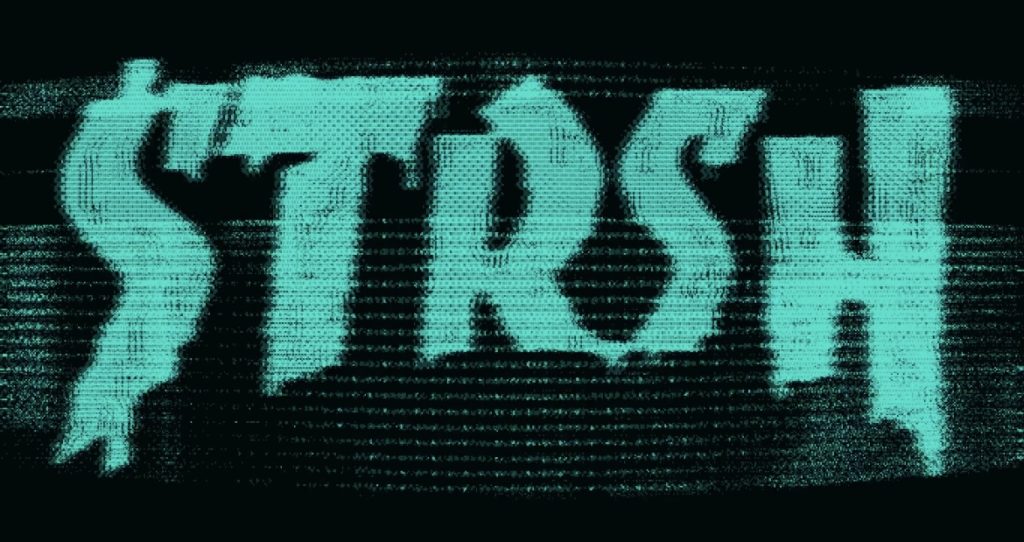Google’ trash art’, and you’ll find seas of artworks made out of repurposed materials. Trashy in more than one sense. However, in the digital sphere, trash art has come to mean something entirely different, something adjacent to the avant-gardists of the 20th century. But how did this happen? There is much more than meets the eye, literally.
Just a year ago, in early 2020, before the record-breaking sales and all the media attention, a handful of artists have been experimenting with minting digital art on the blockchain using newly available marketplaces for digital collectibles. Some platforms, such as Rarible, were open for everyone to join, while others, like SuperRare, required artists to submit their profiles for a review.
It was a time of experimentation, discovery and innovation, much like the present. Just as Foucault examined the fluid nature of truth and power, the participants of the early NFT marketplaces were engaging in a power struggle, defending the acceptance of art in all its forms.
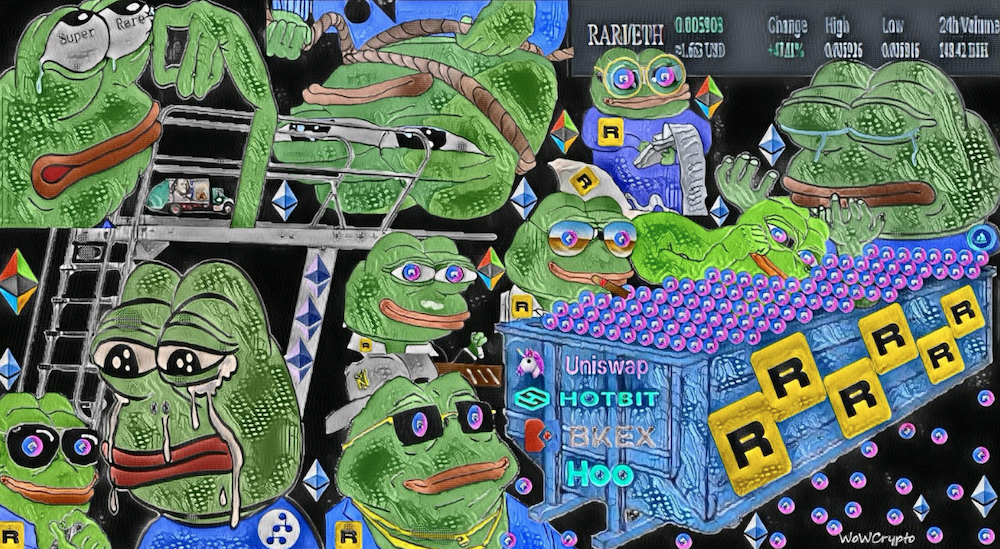
Coined by the artist @spacedivers, the term Trash Art has quickly found its way to signify a social movement across the early crypto art scene. “At first, it was a joke for a lazy gif, so basically, anything could be trash art. Take a picture of something people wouldn’t consider art and then animate it in some lazy way,” shares Kamisama, one of the early artists to begin experimenting in the space. By ‘lazy way’, Kamisama refers to apps such as PhotoMosh, which became very popular among Trash Artists to edit remixes of each other’s work in a couple of clicks.
The curated platforms, however, didn’t share the enthusiasm and nor did some of the collectors. Twitter became a medium for heated discussions on the quality of art minted with artists defending the freedom of self-expression in all its forms. “They didn’t even put the word art there – just called it spam,” comments Mohini, who’s been active in building the community early on together with other artists, including @oculardelusion, @SugarClub_, @ShaolinShoppe,
@Jay_Delay, @yelitzardgz, @Ferris_Bullish, @CollinsCustomIP and @hiram_mesa to name a few.
A pivotal moment took place when one of the most prominent advocates, crypto artist Robness himself was suspended from SuperRare for a repurposed image of a bin taken from stock footage of Home Depot – the 64 GALLON TOTER. “It was total bs, and big named artists were throwing their weight around in this space trying to set rules for everyone. Collectors with money had way too much influence on what the platforms decided to do to artists,” comments artist and curator CryptoYuna, who has been an active voice during the development of the Trash Art movement. “For me, Trash Art was a group of friends who saw one of our own being attacked and banned from SuperRare for minting a trash can using PhotoMosh. It was called lazy art and thrown off a notoriously gatekept site that wanted to be the Sothebys of the crypto art world… So we had had enough and rebelled.”, she says.

Robness, 64 GALLON TOTER
Robness’ 64 Gallon Toter became a symbol of both protest and unity among the community, with thousands of trash can spin-offs in all shapes and forms minted. CryptoYuna’s ‘Illegal TRASH quarantined’ is a prime example, created as a humorous response to the absurdity of the time. “Illegal because I stole the trash can from another artist (a good friend), remixed it, slapped a mask on it and minted it. It embodied the validity of what is art, should artists be allowed to remix others work, copyright issues and blockchain,” she explains.
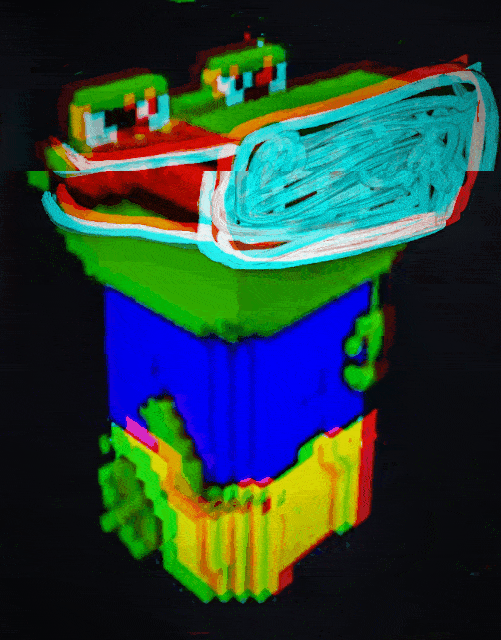
CryptoYuna, Illegal TRASH quarantined
“Trash cans began flying through the NFT space, crossing chains and uniting artists, all the way,” jokes Bitjamin, whose work Prayer at the Mound depicts a kneeling figure praying to the trash can. Kamisama even used the digital riot as an opportunity to bring trash into Cryptovoxels, the user-owned virtual world, by making a trash can wearable. Moreover, he added a pepe to further the message; “It seemed like the people gatekeeping at the time really hated Robness and trash art, and also hated pepe. So naturally, I had to combine them”, explains Kamisama.
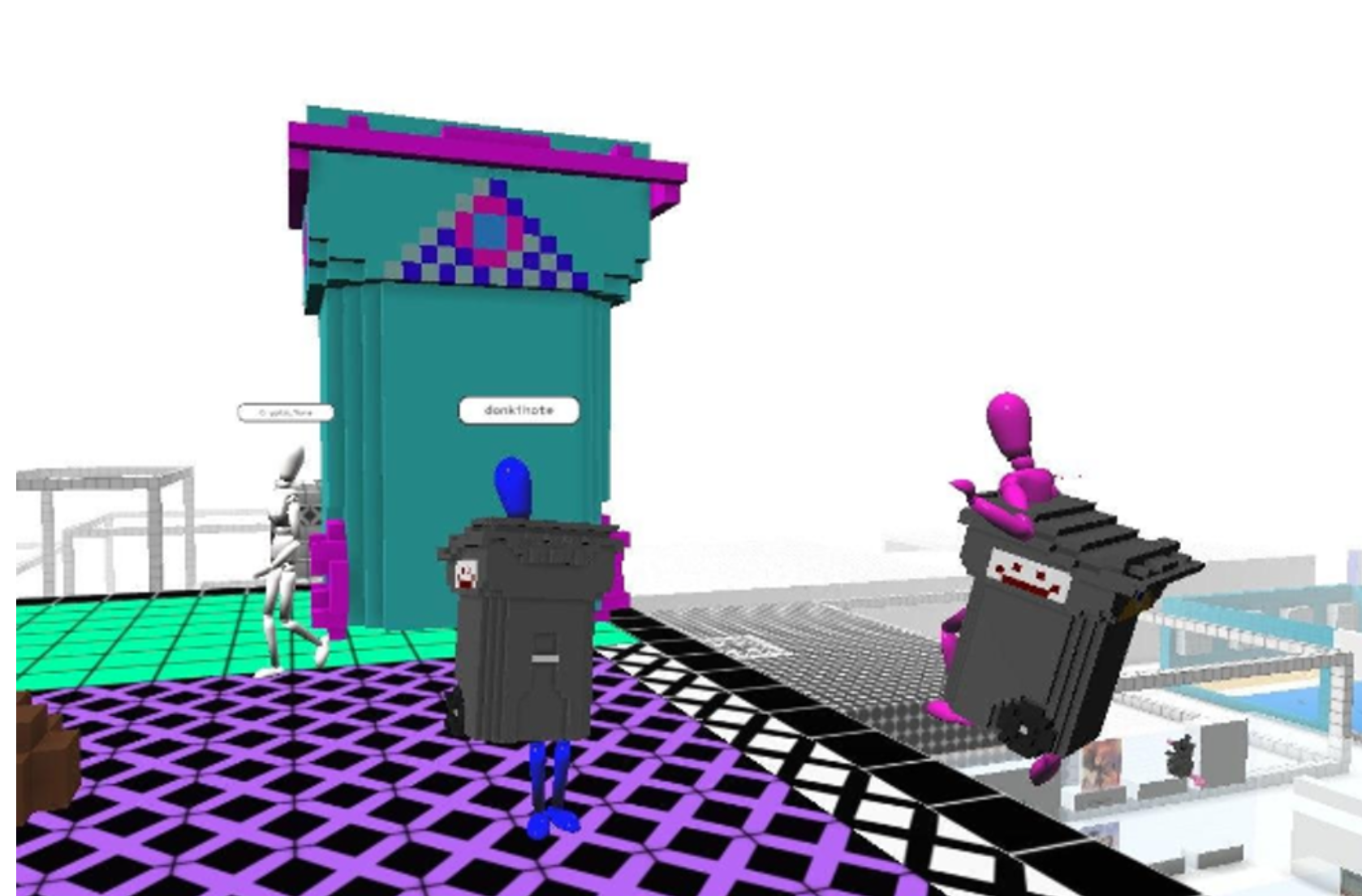
Kamisama’s Wearable 64 gallon toters in Cryptovoxels
The collective energy has been a vital element driving the movement forward. “To me, trash art is a communal feeling of mutual respect amongst artists. A contrarian approach to the art critics that would keep people away from publishing and publicizing their works,” says Bitjamin. Like Bitjamin and many others, Mohini has also found solace in the opportunities both the community and the digital medium have offered for self-expression. “To me, Trash art is a vacation; there are no rules, and there’s no need to be too meticulous,” she says, “instead of getting addicted to games, I got addicted to remixing images”.
come here and strangle me with you bare hands if you hate my #trashART it is my vacation from all the imposed rules in terms of design and fine art technicalities which i been trained to work on as a professional video editor for mainstream media since 2004 in pi. 🥳my vacation. pic.twitter.com/IIFRseklvI
— 👀༒ₘₒₕᵢₙᵢ༒ ༒ ooakosimo ༒ (@OoakosiM) March 23, 2020
The entire debate between trash artists and their opponents more than reminds of how people responded to dadaists’ ready-mades in the previous century. While some collectors came around to appreciate trash art, other platforms can still be rigid in their policies. The artist recently banned for his low effort “NFT” from the curated marketplace Foundation, Max Osiris, is an example of the ongoing censorship and a prolific creator of the Trash Art movement. Following Cointelegraph’s article on Robness in 2020, Osiris cleverly minted an image of Duchamp’s/Elsa von Freytag-Loringhoven’s urinal, but with Robness’ signature instead. Despite Osiris’ removal from Foundation, the glitch aesthetic of the movement ever so present in ROBNESS URINAL and the broader range of trash artworks recently received a thumbs up from the art critic Kenny Schachter in his exploration of the NFT space. And with the crypto art community welcoming more experts from the traditional art market, new voices join the dialogue by adding meaning and context.
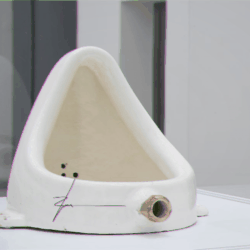
Max Osiris, Robness Urinal
Artist and Trash Art historian Eric Paul Rhodes has been one of the most prominent figures in documenting this evolution. He brings historical examples to demonstrate how Trash Art is a continuation of the ongoing revolutionary debates on what is art. “We took the term and owned it, just like ‘Impressionism’ was taken by the Impressionists, despite it being a derogatory reference by a critic,” he explains. Eric also adds that when we talk about Dada and Impressionism, there’s a century-long understanding of art history. And similarly, Trash Art will be as significant in the long run. “Trash art put Rarible on the map,” he comments, further highlighting the influence the community had retrospectively.
Eric breaks down Trash Art into three essential parts – the movement, the meme and the aesthetic. As Trash Art evolved, so did the three elements, allowing artists to pursue and perfect their skills and vision in different directions while continuing to add their take on what it means to be a Trash Artist. Eric sees the future of Trash Art in this evolution: “You can see CryptoYuna’s work with Graffiti Queens, JayDelay’s RATS project and Max Osiris getting kicked out of Foundation – he’s still asking the question and forcing the platforms to answer it – what is art?.”

Unofficial Punks by Eric Paul Rhodes (@secondrealm)
As also pointed out by Amanda Silberling in the Observer, the questions regarding the core of what we consider art and how we assign value in the age of mechanical (digital!) reproduction remain central to the discussion surrounding Trash Art. It forces us to re-evaluate our perceptions and notions about things we have long held to be true, questions we need to answer as we increasingly move into a digital existence. And isn’t that precisely what good art is meant to do? Whether the works were ever mere trolls or not, Trash Art has firmly established itself as a movement in crypto art history.
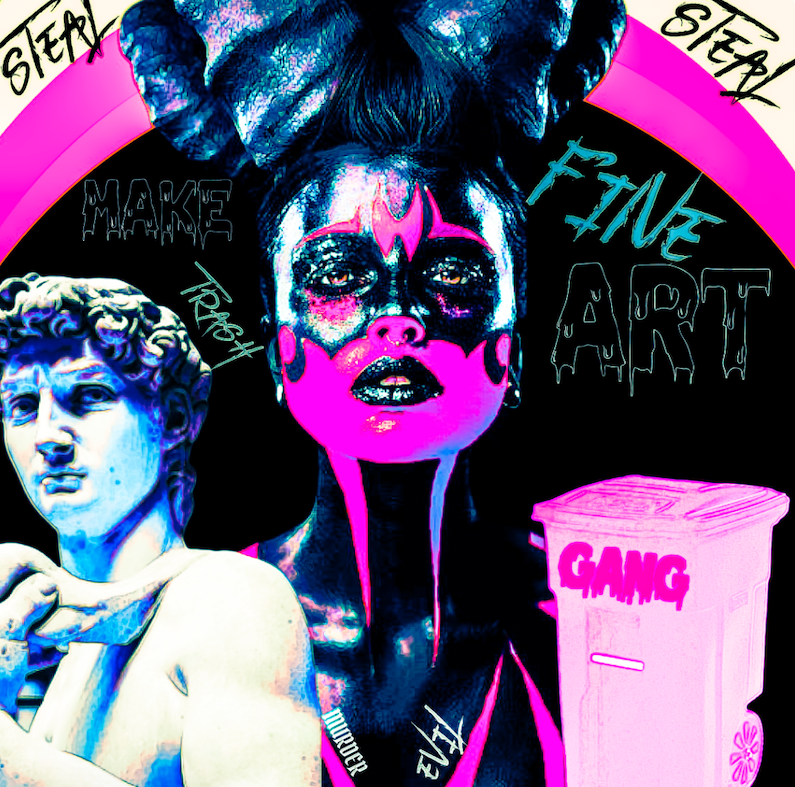
Bitjamin, 𝔽𝕚𝕟𝕖 𝔽𝕦𝕔𝕜𝕚𝕟 Λ𝕣𝕥 ℕ𝕠. ¹
With thanks to contributors including: @secondrealm, @OoakosiM, @cryptoyuna, @Bitjamin and @Don_keyedjote.
Cover image by Robness, $TRSH’MISSION (INDIAN OCEAN GREEN)


